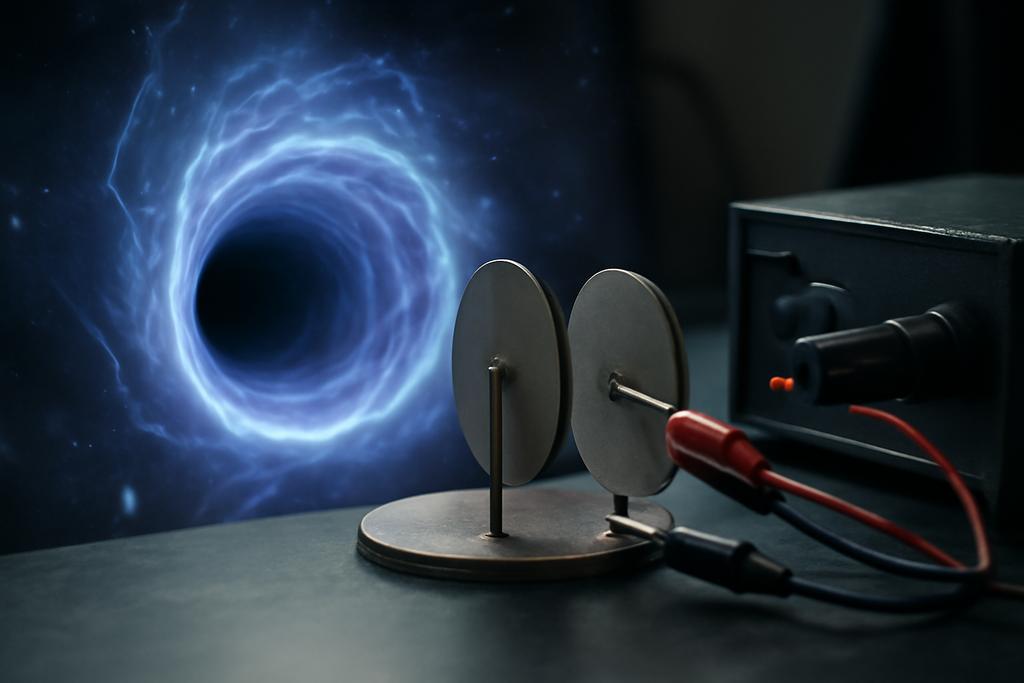Bridging the Gap Between Science Fiction and Reality
Wormholes, those fantastical tunnels through spacetime popularized in science fiction, have captivated imaginations for decades. But what if the very fabric of reality hinted at the possibility of their existence, not through some far-fetched speculation, but through the seemingly mundane realm of quantum physics and electricity? That’s precisely what a groundbreaking study from the Università degli Studi di Bergamo suggests.
The Casimir Effect: A Quantum Vacuum’s Unexpected Power
The researchers, Remo Garattini and Athanasios G. Tzikas, based their exploration on the Casimir effect, a phenomenon where two closely spaced, uncharged metallic plates in a vacuum experience an attractive force. This force, arising from the zero-point energy of the quantum electromagnetic field, isn’t merely a theoretical curiosity. It’s a measurable, observable effect, a tiny whisper of the quantum vacuum’s hidden energies.
The surprising twist? This attractive force is generated by negative energy. In the context of general relativity, negative energy is precisely what’s needed to overcome the immense gravitational forces predicted to collapse any naturally occurring wormhole. It acts as a kind of anti-gravity, a repulsive force that could, theoretically, keep a wormhole open and traversable.
More Than Just Quantum Fluctuations: Adding Scalar and Electric Fields
Garattini and Tzikas didn’t stop at the Casimir effect alone. Their model incorporates two additional components: a scalar field and an electric field. The scalar field, a ubiquitous entity in theoretical physics, adds another layer of complexity to the gravitational equations. It’s not simply filling space; it’s dynamically interacting with the spacetime geometry, creating a sort of ‘scaffolding’ that influences the wormhole’s structure.
The electric field, meanwhile, is a more readily understood force. Its introduction in the model is not arbitrary; it’s a vital part of the balancing act needed to maintain the wormhole’s stability. The electric charge acts as a source of energy, providing the necessary ‘pressure’ to counter the inward pull of gravity.
A Delicate Balance: The Role of Exotic Matter
The researchers’ model isn’t simply about adding ingredients to a cosmic recipe. It’s about achieving a precise, delicate balance. To ensure the field equations are consistent, they incorporated a ‘thermal tensor’—a mathematical construct that represents the pressure terms within the wormhole. This tensor vanishes at the wormhole’s throat, emphasizing the precision required to prevent the wormhole from collapsing. The interplay between the negative Casimir energy, the scalar field, the electric field, and the thermal tensor is what makes their model unique and promising.
It’s a fascinating dance between forces usually associated with different branches of physics—quantum field theory and general relativity—and their interaction holds the key to creating a stable traversable wormhole.
Near-Throat Approximations: A Necessary Simplification
The sheer mathematical complexity of the problem forced the researchers to use near-throat approximations. Essentially, they focused their analysis on the region immediately surrounding the wormhole’s narrowest point. This simplification doesn’t negate the study’s significance; it’s a common approach in tackling difficult astrophysical problems. While this study doesn’t describe the entire geometry of a hypothetical wormhole, it provides critical insight into the conditions required for its existence near its throat.
Throat Size and Elementary Charges: An Intriguing Relationship
One of the most intriguing findings is the relationship between the wormhole’s throat size (its narrowest point) and the number of elementary charges it can support. The researchers found a direct proportionality: a larger electric field (more charges) leads to a larger throat size. This finding suggests that the electric field, far from being a passive participant, plays a crucial role in determining the wormhole’s physical dimensions.
The Null Energy Condition: A Cosmic Speed Limit?
One of the major obstacles to the existence of traversable wormholes is the Null Energy Condition (NEC), a fundamental constraint in general relativity. The NEC states that the energy density plus the pressure along any light ray must be non-negative. In simpler terms, it means that gravity must always be attractive. However, for a wormhole to remain open and traversable, the NEC must be violated. This is the very essence of needing exotic matter.
Garattini and Tzikas’s model demonstrates a violation of the NEC, primarily through the radial pressure within the wormhole. This suggests that the combined effect of the Casimir energy, scalar field, and electric field generates a net repulsive force, thereby overcoming the usual gravitational collapse.
Implications and Future Directions
The implications of this research are significant. While we’re still far from building a wormhole drive, this study provides a theoretical framework that bridges the seemingly incompatible worlds of quantum physics and general relativity. The researchers themselves acknowledge that further investigation is needed, particularly by considering more complex scenarios such as the inclusion of rotation.
Their approach opens exciting avenues for future research. By relaxing the near-throat approximation, future studies could provide a more complete picture of the wormhole’s geometry. Investigating the impact of other physical effects, like rotation, could reveal even more complex and nuanced relationships.
The fact that we are even contemplating the possibility of creating a stable traversable wormhole using ingredients as ordinary as quantum vacuum energy and electric fields is itself a testament to the deep interconnectedness of our universe and the power of theoretical physics. It’s a reminder that the most astonishing discoveries often arise from the unexpected convergence of seemingly disparate ideas.










